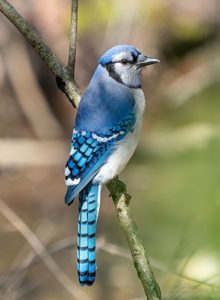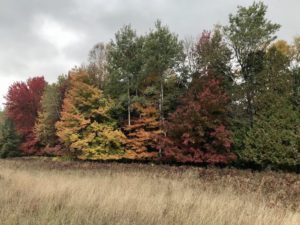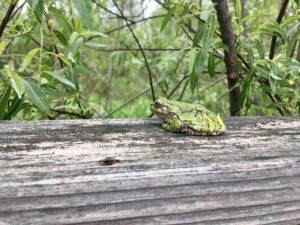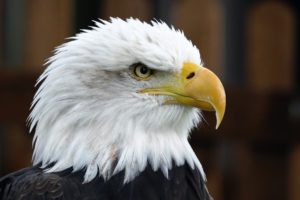Written by Kennedy Zittel, Assistant Naturalist
Recently, the usual bird chirping noises coming from the bird feeder outside of my office window have been frequently interrupted by very loud calls. Looking out the window, I am greeted by a bright blue feathered bird…well… we will talk about the whole “blue” thing later. But for now, just know that the bird interrupting the quiet chirping is a Blue Jay.
 Blue Jays (Cyanocitta cristata) are members of the Corvidae family (including crows and ravens). They can be found not only in deciduous and coniferous forests but can be found throughout residential areas too. They feed on seeds and nuts (they love acorns) but also will eat fruits, arthropods, and even small vertebrates on occasion.
Blue Jays (Cyanocitta cristata) are members of the Corvidae family (including crows and ravens). They can be found not only in deciduous and coniferous forests but can be found throughout residential areas too. They feed on seeds and nuts (they love acorns) but also will eat fruits, arthropods, and even small vertebrates on occasion.
They are large songbirds, measuring around 9-12 inches from bill to tail, and weigh around 2.5-3.5 ounces (70-100 grams) with a wingspan of 13-17 inches. They have a crest on their head, that they can raise and lower depending on their mood. How cool is that? If the blue jay is excited or agitated it will have its crest fully raised. If scared, they bristle their crest outwards. If they are hanging out amongst other blue jays or resting their crest will be flattened down.
Though a bit startling to hear while working at your desk, a blue jay’s talkative nature can be pretty beneficial to other bird species. They call out if they see a predator within their territory, thus giving smaller birds time to act accordingly. Blue jays often will chase away predatory birds like hawks and owls. If an owl roosts near a blue jay nest, the jays will mob the owl until it leaves the area. Weirdly enough, blue jays can also impersonate the calls of raptors, especially red-shouldered hawk and red-tailed hawk calls, researchers think this behavior is either to tell if another hawk is in the vicinity or is potentially used to scare away other birds near food sources. They can mimic those calls so well that it is often hard to tell which is which!
Besides their raptor mimic calls, blue jays make a wide variety of sounds. Like other corvids, they can even mimic human speech! Their most commonly recognized call is their alarm call, which is a very loud gull-like scream. They also make a “jayer-jayer” call that increases with speed as the bird becomes more agitated. The “jayer-jayer” call helps gather other blue jays to band together to go mob potential predators. If hanging out amongst other jays, they use quieter calls, one of which is said to sound like a rusty pump given its squeaky nature.
What if I told you that a blue jay isn’t actually blue? Well, it’s true! The blue coloration is not due to the color pigments in the feathers, but actually because of the way the light bounces off of them. When light hits their feathers, all colors are absorbed except blue, thus the blue color is reflected, making your eyes see their feather as blue. Unlike cardinals, whose feathers are truly red due to the pigment of the feathers being red. If you were to crush up each of their feathers, a cardinal’s feather would have a red powder whereas if a blue jay feather is crushed up the powder will be brown.
Another weird thing about blue jays is their migration, or lack thereof… sort of. Some blue jays are present throughout winter throughout all parts of their population range. Some migrate. Some individuals will migrate south one year, stay north the next, but then migrate the following year. No one seems to know why these birds choose to migrate when they do, though it does seem that younger blue jays are more likely to migrate than adults.
Though a bit of a change from the usual quiet chirping at the feeder, I do enjoy seeing the Blue Jay visit. Blue jays, like their crow and raven cousins, are very smart, and it is always fun watching them explore the feeder area. The not-so-blue, Blue Jay is a welcomed sight and sound at the feeders.
photo from Wikipedia




